
FAMLI: The Ins And OuTs - Cinda Daggett, Director, Human Resources, Full Velocity Consulting DECEMBER 2022 • Vol.09 • No.12 (ISSN 2564-2006) 18 11 25 30 how 12 Organizations Are Changing Their employee Leave Policy In 2023 - Brett Farmiloe, Terkel.io What If Four-day Work Week Isn’t The Only solution? - Scott Day, Alludo The end Of The 9 To 5 Workday - Tom Medema, Bubbles Control What You Can: For shift-Based Businesses, Technology Can help - Chad Halvorson, When I Work
FAMLI: The Ins And Outs


How Colorado’s employee leave policies will pave the way for a stronger commitment to providing workers with greater access and more flexibility in terms of leave policies - Cinda Daggett, Director, Human Resources, Full Velocity Consulting 06 I nde X On the Cover Workforce Management, Time & Attendance, Excellence DECEMBER 2022 Vol.09 No.12 (ISSN 2564-2006) Articles 08 Enterprise Software’s Biggest Blindspot: How To Engage 2.7 Bn Non-Desk Employees Few of today’s work management technology solutions cater to the global deskless workforce - Yuval Magid, Chief Operating Officer, Connecteam 16 How To Get The Most Out Of Holiday Hires This Season A strong workplace safety program is key - Beemal Vasani, Head, Business Development, Ansell Inteliforz 22 Balancing The Future Of Work With Hybrid Workers And Wellness Needs 4 strategies to improve hybrid models - Natasha Mohan, CEO and Founder, WorkSocial 28 Why Companies Should Provide Coworking Spaces To Remote And Hybrid Employees An excellent opportunity for employees craving connection, productivity, and opportunity - Shane Connell, Executive Vice President, The Connell Company 33 HR Trends 2023: It’s Time For HR To Break Boundaries 9 HR trends for the new year - Natal Dank, Head, Learning, Consultancy & Coaching, PXO Culture, and Chief Trendwatcher, HR Trend Institute
How 12 Organizations Are Changing Their Employee Leave Policy In 2023



A leave policy that caters to your employees’ needs
- Brett Farmiloe, Founder and CEO, Terkel.io
What If Four-Day Work Week Isn’t The Only Solution?
Different roles and businesses come with a variety of requirements
- Scott Day, Chief People Officer, Alludo
The End Of The 9 To 5 Workday
How to build a thriving asynchronous work environment

- Tom Medema, Founder and CEO, Bubbles
Control What You Can: For Shift-Based Businesses, Technology Can Help
Gone are the days of employers posting schedules and expecting employees to rearrange their lives to make a shift or project work for them
- Chad Halvorson, Founder and CEO When I Work
Top Picks
11 18 25 30
INDEX
How are our Workforce Management Products and Services helping to make you smarter?
Workforce Management Excellence - Monthly Interactive Learning Journal
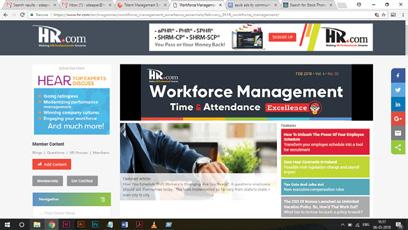
Workforce Management Webcasts for Credit

This monthly interactive learning experience showcases activities, processes, and tools needed to manage a workforce.
Management Virtual Events
HR.com webcasts deliver the latest Workforce Management industry news, research trends, best practices and case studies directly to your desktop. Webcasts are available live online with a downloadable podcast and a copy of the slides (PDF) available before and after each webcast. Earn all of the required recertification credits for aPHR, PHR, SPHR, GPHR, and SHRM Certifications. HR.com’s one-hour webcasts, in every HR specialty including HRIS and Payroll, are pre-approved for HRCI and SHRM credit (excluding Demo webcasts). Workforce
Virtual Events in the Workforce Management encompasses all the activities, processes, and tools needed to manage a workforce. A comprehensive WFM system includes planning, forecasting, scheduling, and tracking workers to optimize the balance of customer, employee, labour laws and organizational needs. Be informed and understand the latest WFM trends through Workforce Management Virtual Events. Each Virtual Event consists of up to 10 credit webcasts.
Workforce Management Community
Join almost 21,700 HR.com members with a similar interest and focus on rewards and recognition. Share content and download research reports, blogs, and articles, network, and “follow” peers and have them “follow” you in a social network platform to communicate regularly and stay on top of the latest updates. This well established Workforce Management Community is an invaluable resource for any HR professional or manager.
Use these invaluable Workforce Management resources today! For more information phone: 1.877.472.6648 | email: sales@hr.com | www.hr.com
Editorial Purpose
Publications
debbie Mcgrath Publisher, HR.com
deepa damodaran Editor, Workforce Management, Time & Attendance, Excellence


new employee Leave Policies for the Changing Work Culture
It is again that time of the year when you look back at the bygone year, take your learnings, and ready yourself for a new year.
As we welcome 2023, we should be ready for the new employee leave laws and policies that are set to go effective in January (and in the later months/years).
The world of work as we know it has changed. With so many people working in nontraditional settings, the U.S. is beginning to put more thought into providing flexible employee leave policies that fit their needs.
The State of Colorado is revising its employee leave policies in preparation for 2023, rolling out a variety of new policies to ensure that working families have access to the benefits they need.
For decades, employees at companies with 50 or more workers have been entitled to leave under FMLA; however, those employees of small employers with fewer than 50 employees have not had access to this protection–until now.
In FAMLI: The Ins And Outs, Full Velocity Consulting’s Cinda Daggett discusses whether Colorado’s employee leave policies pave the way for a stronger commitment to providing workers with greater access and more flexibility in terms of leave policies.
From extending parental leave to unlimited paid sick days, check out how 12 business and people leaders plan to transform their employee leave policies to cater to the future of work in
How 12 Organizations Are Changing Their Employee Leave Policy In
2023.
While we have read several articles about the benefits of a four-day work week and why companies should adopt it, check out Alludo CPO Scott Day’s What If FourDay Work Week Isn’t The Only Solution?, where he touches on why this model of work might not be a fit for all roles and businesses as they come with a variety of requirements.
This is not all!
This month’s issue of Workforce Management, Time & Attendance, Excellence brings you several other informative and educational articles that we hope will help you achieve excellence and efficiency in your workforce management efforts.
Happy Reading!
Disclaimer: The views, information, or opinions expressed in the Excellence ePublications are solely those of the authors and do not necessarily represent those of HR.com and its employees. Under no circumstances shall HR.com or its partners or affiliates be responsible or liable for any indirect or incidental damages arising out of these opinions and content.
edITOR’s nOT e
OR For Advertising Opportunities, email: sales@hr.com
part of this publication may be reproduced or transmitted in any form without written permission from the publisher. Quotations must be credited.
Our mission is to promote personal and professional development based on constructive values, sound ethics, and timeless principles.
CEO,
- Publisher
Copyright © 2022 HR.com. No
Excellence
Debbie McGrath
HR.com
Sue
Director
Marketing, and Research) Babitha Balakrishnan and
Excellence Publications
and Editors Workforce Management, Time & Attendance, Excellence Team Deepa Damodaran, Editor Chinnavel Design and Layout (Digital Magazine) Vibha Kini Magazine (Online Version) Submissions & Correspondence Please send any correspondence, articles, letters to the editor, and requests to reprint, republish, or excerpt articles to ePubEditors@hr.com. For customer service, or information on products and services, call 1-877-472-6648 Workforce Management, Time & Attendance, Excellence (ISSN 2564-2006) is published monthly by HR.com Limited, 56 Malone Road, Jacksons Point, Ontario L0E 1L0 Internet Address: www.hr.com designing
Subscribe now for $99 / year And get this magazine delivered to your inbox every month Become a Member Today to get it FREE! SIGN UP Write to the Editor at ePubEditors@hr.com
Dawn Jeffers VP, Sales
Kelley
(Product,
Deepa Damodaran
Managers
FAMLI: The Ins And Outs
how
By Cinda Daggett, Full Velocity Consulting
With so many people working in nontraditional settings nowadays, the U.S. is beginning to put more thought into providing flexible employee leave policies that fit their needs. The State of Colorado is revising its employee leave policies in preparation for 2023, rolling out a variety of new policies to ensure that working families have access to the benefits they need.
Perhaps most notable is the introduction of the Family and Medical Leave Insurance (FAMLI) program, which begins funding in 2023 and will go into effect in 2024. The FAMLI program, which is only applicable to companies with 10 or more employees, will offer employees up to 12 weeks of paid leave for various circumstances, making a strong commitment to providing workers with greater access and more flexibility when it comes to leave policies – setting a high standard for future initiatives in other states throughout the country.
What Is FAMLI and Who Does it Benefit?
This new program enables any employee to take up to 12 weeks of paid time off under certain situations, such as caring for their own or a family member’s serious health condition, caring for a new child during the first year after birth, adoption/placement of a child, for qualifying military exigencies and when an employee or a family member is a victim of domestic violence, stalking, or sexual assault/abuse.
In addition, there are other circumstances, such as those who experience childbirth complications, who may now qualify for an additional 4 weeks of paid time off.
For decades, employees at companies with 50 or more workers have been entitled to leave under the federal Family Medical Leave Act (FMLA); however, those employees of small employers with fewer than 50 employees have not had access to this protection–until now. Under FAMLI, employees are eligible to receive a percentage of their wages while on approved leave, up to a maximum of $1,100 per week.
This opens the door for these thousands of working people to take care of their health, as well as that of their families, without worrying about surviving without income or facing job loss due to unforeseen medical issues. As a result, this new program offers an important layer of job security which many employees have long deserved but often struggled to obtain up until now.
how Will employees and employers Be Affected?
Starting January 1, 2023, there will be a required .9% payroll tax that is to be shared equally between employers and employees (.45% and .45%). However, employers may elect to pay the entire amount for both the employee and the employer. It is possible we
Workforce Management, Time & Attendance, Excellence presented by HR.com December 2022 6 Submit Your Articles
Colorado’s employee leave policies will pave the way for a stronger commitment to providing workers with greater access and more flexibility in terms of leave policies
COVeR ARTICLe
will see several employers in Colorado offer to pay a higher percentage of the payroll tax in order to attract and retain employees in a tough job market.
While employers are contributing towards FAMLI as part of this program, they will not be financially responsible for paying their employee’s wages while they are on leave – instead, each approved employee will be paid by the state. Furthermore, small businesses with fewer than 10 employees do not have to pay the employer premium but employees still need to pay their share. However, larger businesses with 10 or more staff members are expected to pay their percentage every quarter for as long as their staff count remains above that threshold.
All in all, the .9% payroll tax helps both employers and employees gain access to this valuable leave benefit without unduly burdening either party.
What else should I Know?
Companies who feel that they have a better employee leave program than the one offered through FAMLI can submit their program to the state for review. During the review process, their program will be assessed against various criteria related to compliance with public policy and FAMLI’s objectives. If it meets all of
the criteria, it will be approved and the company can opt out of participating in FAMLI. If it is not approved, then they must participate in FAMLI in order to provide their employees with adequate paid family and medical leave coverage.
It is important for businesses to understand the potential implications of opting out of FAMLI, including any financial penalties required if their custom program is not approved by the state. By providing companies with this option, however, the state allows for meritorious programs to gain social recognition while empowering companies to create tailored policies that are tailored best to meet their unique employee needs.
In addition, it is important to note that those who are self-employed may also participate in this program by paying the .9% payroll tax as well, which could be a huge benefit in the long run. Lastly, when an employee returns from their FAMLI-approved leave, employers must return them to their prior held position, or any other position that is equivalent in terms of pay and working conditions.
Ultimately, job security and trusted financial compensation are the cornerstones of this new program, which ensures that workers across Colorado can take time off when necessary without fear, beginning in 2024.

All in all, the .9% payroll tax added through the FAMLI program will support both employers and employees in gaining access to this valuable leave benefit without a major financial impact for either party.
Daggett is the Director of Human Resources at Full Velocity Consulting
Would you like to comment?

Workforce Management, Time & Attendance, Excellence presented by HR.com December 2022 7 Submit Your Articles
FAMLI: The Ins And Outs
Cinda
enterprise software’s Biggest Blindspot: how To engage 2.7 Bn nondesk employees
Few of today’s work management technology solutions cater to the global deskless workforce
By Yuval Magid, Connecteam
Astaggering 37% of frontline employees are considering quitting their jobs within the next six months, according to an extensive study conducted by the Boston Consulting Group.
These employees make up the bulk of the workforce at many companies. Retail, healthcare, food and beverage, construction and hospitality are all industries that rely heavily on the strength of their deskless workers to drive primary business outcomes. But yet, so many of the technology tools used for workforce management fail to meet the needs of frontline, customer-facing staff, warehouse workers, healthcare professionals and others not tied to a desk.
The vast majority of enterprise workforce management solutions are focused on office employees, touting features and functions that enable in-office teams and remote deskbound staff to collaborate and communicate. But these solutions have a major blindspot: the deskless workforce. Non-desk workers account for 80% of the global workforce, with 2.7 billion workers who fulfill their work responsibilities outside of an office.
Yet enterprise software is designed to fit the needs of employees sitting behind a desk while failing to give the bulk of an organization’s workforce the tools it needs to succeed.
The Lowest engagement Rate in a decade
An even bigger problem is the rate of turnover among the deskless workforce. According to a survey of more than 7,000 global deskless workers conducted by the Boston Consulting Group (BCG), 37% were at risk of leaving their jobs within the next six months. Younger workers were even more likely to quit their jobs with 47% saying they were considering quitting.
A Gallup poll from earlier this year underscores BCG’s findings, revealing that the proportion of actively disengaged workers had reached 18%. “The ratio of engaged to actively disengaged employees is now 1.8 to 1, the lowest in almost a decade,” reports Jim Harter, chief scientist for Gallup’s workplace management practice.
The same Gallup poll found that, since the pandemic, Gen Z and younger millennials – a demographic often more likely to fulfill deskless roles – feel less cared
Workforce Management, Time & Attendance, Excellence presented by HR.com December 2022 8 Submit Your Articles
about and believe they have fewer opportunities in the workplace to develop professional skills. In fact, the percentage of younger workers who strongly agree that they have opportunities to learn and grow, and that someone cares about them and encourages their development, has dropped by 10 percentage points or more since 2019.

It is clear these employees are craving a deeper relationship with their employer and yearning to have a more satisfying employee experience.
The solution to high Turnover: Workforce Management Tools that Boost Employee Experience
McKinsey analysts claim there is a “fundamental mismatch” between a company’s demand for talent and the workers willing to supply it: “The Covid-19 pandemic has led more and more people to reevaluate what they want from a job – and from life – which is creating a large pool of active and potential workers who are shunning the traditionalist path.”
Knowing that replacing an employee can cost as much as one-half to two times the employee’s salary, enterprise organizations are in dire need of addressing high turnover rates among their deskless workforce. Today’s younger workers are less likely than previous generations to remain in a role if they
do not feel supported. And it is not just younger employees exiting the workforce. The BCG survey found that more than a third of the Gen X employees it surveyed and nearly a quarter of baby boomers were contemplating quitting their deskless jobs.
Granted, employment policies, management best practices and pay are key to reducing turnover and improving the employee experience, but the right workforce management platform can drastically improve the engagement and retention of non-desk workers. The key is finding a solution that best fits the needs of your deskless employees.
evaluating solutions for Mobile-savvy Managers and employees
Mobility is a must when choosing a workforce management solution for a deskless workforce. A mobile app that is easy to deploy and includes a user-friendly interface is essential. Today’s frontline employees rely on their smartphones for nearly every area of their life, and their work life should be no different – especially the mobile-first generation of younger employees and managers.
The mobile app should have full functionality to manage your operational needs and communication channels, as well as your HR and training requirements. A comprehensive workforce
Workforce Management, Time & Attendance, Excellence presented by HR.com December 2022 9 Submit Your Articles
Blindspot: How To Engage 2.7 Bn Non-Desk Employees
Enterprise Software’s Biggest
management solution enables businesses to manage work schedules, provide communication channels for all levels of staff, survey employees and conduct onboarding and training programs. Employees should be able to manage tasks and track their workload, giving managers visibility into day-to-day activities.
Customization is also important. The deskless workforce includes a wide variety of workers – retail store employees, hotel staff, construction workers, healthcare professionals, delivery drivers and more. Each of these groups requires different tools to do their jobs. For example, construction workers need technology that can quickly alert them to a potential jobsite hazard. Retail managers need tools that enable them to easily cover hard-to-staff shifts or manage tasks tied to their store’s opening and closing routines. Healthcare organizations have strict guidelines and protocols that are often amended without much notice – requiring staff receive daily updates. Each of these scenarios underscores why customization capabilities are key when selecting a workforce management solution that meets your specific needs.
The $7.5 billion workforce management software market is projected to reach $12.5 billion by 2030, according to Straits Research. Enterprise software that is part of this market covers a wide range of solutions, from time management tools to communication platforms and finance applications

but many still have a blindspot when it comes to the needs of the deskless workforce.
With employee engagement at an all-time low, its imperative enterprise organizations implement an effective workforce management solution that addresses the needs of deskless employees. The goal is to find an all-in-one solution that enables you to improve employee engagement with your frontline workers, increasing productivity, boosting the overall employee experience and creating more satisfying work environments for workers outside of the office.
Yuval Magid, Chief Operating Officer of Connecteam, joined the company in 2018 as one of its first employees. He holds a B.A. in Multidisciplinary Studies from the University of Haifa and has extensive Naval experience. Prior to Connecteam, Yuval led various business partnerships and go-to-market initiatives at Windward, a leading maritime analytics company, and served in various leadership roles in other organizations.
Would you like to comment?

Workforce Management, Time & Attendance, Excellence presented by HR.com December 2022 10 Submit Your Articles
Biggest Blindspot: How To Engage 2.7 Bn Non-Desk Employees
Enterprise Software’s
how 12 Organizations Are Changing Their employee Leave Policy In 2023

A leave policy that caters to your employees’ needs
By Brett Farmiloe, Terkel.io
From extending parental leave to unlimited paid sick days, here are 12 answers to the question, “How is your employee leave policy changing in 2023?”
● Extending Parental Leave
● Creating One Leave Type to Rule Them All
● Adding Pregnancy Loss Leave
● Including Caregiving Leave Days
● Adding Sabbatical Leave for Mental Health
● Offering Flex Leaves to Show Trust to Employees
● Presenting Unlimited Paid Sick Days
Antreas Koutis, Administrative Manager, Financer

Extending Parental Leave
Starting in 2023, our employee leave policy will be changing. Maternity and paternity leaves will not affect the regular available leaves.
We are making this change because we believe it is important to support families during the early stages of child-rearing. Allowing parents to take extended leaves without affecting their regular leave entitlement will encourage them to bond with their new baby and devote more time to their young family.
We believe this will lead to happier, more productive employees who feel supported by their employers. We hope other businesses will follow our lead and adopt similar policies to support families and promote employee wellbeing.
Workforce Management, Time & Attendance, Excellence presented by HR.com December 2022 11 Submit Your Articles
● Building More Inclusive Qualification Requirements
● Carrying Over Unused Vacation Days
● Introducing Leave Pooling
● Changes in Tracking PTOs
● Choosing Their Own Days Off
Top Pick
John Ross, CEO, Test Prep Insight

Creating One Leave Type to Rule Them All
Recently, I had an employee approach me about adding “pet bereavement leave” to our long roster of leave types.
Her much-loved, 14-year-old cat had passed away, and she wanted a few days off to grieve. I was very sorry to hear about her cat, but honestly, enough is enough. That was when I decided our amount and type of leave available had gone too far. I thought we already had every type of leave imaginable (paternity, bereavement, sick, baby bonding, etc.), all with different accumulative calculations and ranges.
That is why I have switched our company over to a singular type of leave in 2023—personal days. Basically, rather than offering a dozen leave types, employees get 8 weeks of paid leave every year. They can use this time for whatever they want - pet bereavement, vacation, sick time, whatever. It is all accumulated and calculated the same way, reducing our HR administrative burden and helping to keep me sane.
David Aylor, CEO & Lawyer, David Aylor Law Offices
Adding Pregnancy Loss Leave
In 2023, we will offer pregnancy loss leave for employees, who have suffered a miscarriage. We have been considering the policy since learning that the dating-app company Bumble has offered their workers paid time off after a miscarriage.
Because of the pandemic, companies have expanded their benefits packages regarding caregiving and mental health. In fact, our company has recently revised our parental leave and fertility benefits policies.
By offering pregnancy loss leave, we aim to recognize the traumatic effects of miscarriage on our employees. Furthermore, we wish to support the affected individuals and families, who often struggle in silence because of the cultural stigma surrounding miscarriages.
Ruben Gamez, Founder & CEO, SignWell


Building More Inclusive Qualification Requirements
We are assessing current policies and building a universal employee leave policy in 2023 to recognize diverse needs and family setups. For example, we give all genders the same rights, and adoptive parents can take as much paid leave as birth parents. Many leave policies have historically prioritized employees that give birth, which is not fair to other parents.
Beyond parental leave, we are making eligibility criteria for other leave options more inclusive by reducing the minimum working time requirements to qualify and offering fair compensation for employees who earn commissions and bonuses rather than a straight salary.
Tracey Beveridge, HR Director, Personnel Checks

Carrying Over unused Vacation days
One change is that employees will now be able to carry over their unused vacation days from one year to the next. This is a significant change that will have a big impact on HR and employees.
The reason for the change is that it will allow employees to save up their vacation days so they can take longer trips or have more time off. This should be a positive change for employees, and HR should follow in your footsteps.
Workforce Management, Time & Attendance, Excellence presented by HR.com December 2022 12 Submit Your Articles How 12 Organizations Are Changing Their Employee Leave Policy In 2023
Arkadiusz Terpilowski, Head of Growth & Co-Founder, Primetric

Introducing Leave Pooling
We are considering introducing “Leave Pooling” to our company.
If someone needs more days off for some reason, they can simply trade from someone who does not need them. It also creates a feeling of goodwill among employees, allowing them to feel connected.
Sometimes, the employees do not want to share their emergency with the management because of personal reasons to ask for extra leaves. With this policy, they can quietly get some days off on their sheet donated by their colleague.
Before we made this change, we had the traditional vacation schedule, we would take the usual U.S. holidays and employees would choose the weeks they wanted for annual vacations. We accept that employees in other countries may have no interest in U.S. holidays and would probably prefer to take days that apply to them.
With this in mind, employees will be welcome to select the days they want to take off, we will expect no one to use up any of their vacation balance on a day they would prefer to work.
By allowing the employees to celebrate their own national holidays we are contributing to our culture of acceptance and I would recommend that other businesses do the same if possible.
Ruth Novales, Marketing Director, Fortis Medical Billing Professionals

 Linda Shaffer, Chief People Operations Officer, Checkr
Linda Shaffer, Chief People Operations Officer, Checkr

Changes in Tracking PTOs
We plan to continue offering our employees unlimited PTOs, but we are looking to make some changes to the way it is used and tracked.
This change is being made to encourage employees to use their time off and to make it easier to track and manage. This change can help ensure that our employees are taking the time they need to recharge and rejuvenate. It can also help reduce stress and improve productivity.
Including Caregiving Leave days
One change we are considering is including caregiving leave days. With the recent pandemic, it was not uncommon for workers to take time off to care for sick family members.
Although remote working is viable, we are aware of the stressful effects of caring for a sick loved one without having to pile work on top of it. So doubling sick days to include caregiving responsibilities is one way we can support our employees through such a trying time.
Colin Palfrey, Chief Marketing Officer, Crediful

Choosing Their Own days Off
Our business has reverted to a fully remote model and, because of this, we have been recruiting new employees from around the globe.
Workforce Management, Time & Attendance, Excellence presented by HR.com December 2022 13 Submit Your Articles
How 12 Organizations Are Changing Their Employee Leave Policy In 2023
Alaina Ross, Co-Founder & HR Director, Sleep Family

Adding sabbatical Leave for Mental health
Effective starting next year, we are amending our leave policies to include a sabbatical leave for mental health.
We are making this change because we feel our company has neglected and minimized the mental health of our employees over the past few years. As such, we feel it is time to show our employees that we value their mental health just as much as their work product.
For employees who qualify for this leave, they can take up to 60 days off in order to recharge, refocus, and get the help they need. We feel by offering this benefit, we will signal to our employees that we care about their future and want them around for the long haul.
Sam Tabak, Board Member, RMBH Charities

Offering Flex Leaves to Show Trust to employees
In addition to accruing annual sick and vacation leave credits, we plan to give flex leaves in 2023. Our employees may use flex leave credits after exhausting all their sick and vacation leave allocations on the attendance portal.
We will not require our employees to submit a request in advance or present any reason for the absence once they return to work. Through this, we are telling our employees how we trust them with their time and expect them to use it responsibly. This will make them more productive and passionate to work, increasing the chance to boost their performance and job satisfaction.
Jarir Mallah, HR Specialist, Ling App
Presenting unlimited Paid sick days

We have opted to remove one barrier to getting well quicker by adding unlimited sick days. We should force no one to come to work sick.
Instead, they should be able to heal. We believe that this will cause fewer sick days to be taken as we will grant employees the time to actually allow their immune systems to recover.
The hoped end result will be a decrease in the frequency of sick days taken.
Brett Farmiloe is the Founder and CEO – and currently CHRO - of Terkel.io. Brett is an SHRM Influencer and has also been a keynote speaker at several state SHRM conferences around the topic of employee engagement.

Would you like to comment?

Workforce Management, Time & Attendance, Excellence presented by HR.com December 2022 14 Submit Your Articles
How 12 Organizations Are Changing Their Employee Leave Policy In 2023
Sponsor any of this year’s state of the industry research topics and come away with your very own affordable and branded research report and infographic, establish yourself as an industry thought leader by presenting at a one-day Virtual Event, and bolster sales through the generation of qualified leads.
Hottest Trends in Benefits
Virtual Event
See list of hot industry research topics below and give us a call to get started.

New Ideas and Tools for Effective Performance Management Virtual Event
Jan 31, 2023
Learn more at: hr.com/Performance ManagementVirtualEvent
The State of Contingent Work
Feb 7, 2023
Learn more at: hr.com/contingent workresearch
Jan 25, 2023
Learn more at: hr.com/BenefitTrends VirtualEvent
The State of Human Experience in the Workplace
Feb 15-16, 2023
Learn more at: hr.com/ HumanExperienceResearch
The Future of Upskilling and Employee Learning
Feb 22, 2023
Learn more at: hr.com/ upskilling
The Future of Workplace Trends
Feb 8, 2023
Learn more at: https://hr.com/ workplacetrends
Solving for Today’s Workforce Shortages
Virtual Event
Feb 23, 2023
Learn more at: hr.com/workforce shortagevirtualevent
Align your brand with this year’s State of the Industry hot HR
and showcase your
topics
expertise
A State of the Industry Research & Virtual Event Sponsorship Opportunity Contact us today to get started at sales@hr.com | 1.877.472.6648 | hr.com/industryresearch
how To Get The Most Out Of holiday hires This season

A strong workplace safety program is key
By Beemal Vasani, Ansell Inteliforz
Distribution centers face a daunting challenge this holiday season.
On one hand, online retail is projected to increase by 10 to 12 percent despite inflation’s toll on consumer budgets. Looking to incentivize cautious shoppers and offload a record surplus of inventory, retailers are slashing prices early and expanding the holiday savings season.
On the other hand, businesses are hiring fewer seasonal workers amid economic uncertainty. The number of warehouse and transportation jobs declined by 46 percent in October compared to a year ago as major retailers like Macy’s, Walmart, and Dick’s Sporting Goods announced holiday hiring reductions.
The upshot is that many distribution centers will face
increased product demand and fewer hands to move it. Increasing worker retention and productivity will be critical to navigating this challenge. Building a strong safety culture backed by AI-enabled technology can help businesses shorten onboarding time, decrease injuries, cut workforce churn, and keep up with demand this holiday season.
Here’s how the right safety program can lead to a safer, happier, more productive workforce.
Keeping employees safe and Efficient
Getting holiday hires up to speed quickly and efficiently is a priority for businesses working under the seasonal crunch. But rushing an inexperienced employee to the floor puts them at increased risk of injury.
Improper form while performing repetitive tasks can have serious consequences. Nearly three out of
Workforce Management, Time & Attendance, Excellence presented by HR.com December 2022 16 Submit Your Articles
every 100 US full-time workers will suffer a recordable safety incident over the course of a year and the average musculoskeletal disorder (MSD) costs an employee 12 days at work. A distribution center navigating holiday demand with a lighter load of seasonal hires cannot afford those interruptions.
That is where cutting-edge technology can make a difference. Wearable tech like gloves or hand wraps can measure a worker’s movements throughout the day. That data can then be analyzed in real-time by AI-enabled software to identify motion that puts the worker at increased risk of injury.
Let us say an employee is flexing their wrist in a specific direction too often. A technology-enabled glove can identify this and issue a gentle haptic buzz to remind them to use the proper hand position taught to them in training.
At scale, the data collected across workforces can allow employers to identify individuals, teams, or departments at risk of injury and head the problem off with additional training. Recently, a leading logistics and warehousing company used this approach to reduce risky movements by 38 percent among employees prone to unbalanced motion.
Keeping employees happy
Ensuring strong workforce retention is always important but even more so during the seasonal rush. Amid the Great Resignation, we have seen that people are choosing where they work based on the culture they see there. And
safety is a big component of that. Your safety program is a direct reflection of your cultural values as an organization.
In a recent poll of over 500 people employed in manufacturing, warehousing, and distribution, 76 percent of respondents said they were more likely to accept or stay with an employer, who clearly prioritizes their physical safety. Another 69 percent of respondents said they would be more likely to stay with an employer who invests in workplace safety technology.
When it comes to workplace safety, actions speak louder than words. Committing to a technology-enabled floor that prioritizes worker safety sends a clear message to current and prospective employees.
What is more, this technology gives employees the ability to take an active role in their own safety. Rather than rely exclusively on safety teams to manually inspect workplaces, some businesses are equipping front-line workers with connected devices that enable them to report safety hazards in real-time.
This digitized process can significantly reduce response times compared to traditional paper-based reporting systems.
Over 89 percent of manufacturing, warehousing, and distribution workers say they see something in the workplace that poses a safety hazard at least once per week, while 47 percent say
their employer can improve how quickly they respond to these hazards. By allowing employees to report these risks themselves, businesses not only create a more effective monitoring and response system but give their workers agency.
This technology-supported safety culture can go a long way in not only keeping seasonal workers safe and productive, but engaged and happy. That can make all the difference for businesses navigating the increased demand and economic uncertainty of the holidays. The right safety technology will help shorthanded teams get more with less.
Beemal Vasani serves as Head of Business Development for Ansell Inteliforz. He has 20+ years of business development, product introduction, management, and marketing experience in various industries including food, consumer package goods, and personal protective equipment.
Would you like to comment?

Workforce Management, Time & Attendance, Excellence presented by HR.com December 2022 17 Submit Your Articles How To Get The Most Out Of Holiday Hires This Season
What If Four-day Work Week Isn’t The Only solution?
different roles and businesses come with a variety of requirements
By Scott Day, Alludo
You’ve probably been hearing a lot about four-day work weeks recently. And it may sound very appealing.
Believe me, I get it. The pandemic blurred the lines between work and life like never before. And as businesses try to figure out what work looks like now, knowledge workers are struggling with long hours, not to mention bosses that are trying to force them back into the office. People are reporting more stress. They are wishing they could regain their time, prioritize their lives, work where they feel most productive, and frankly, set better boundaries.
So, when we hear about the mandated four-day workweek, many of us think: “Hum... maybe that’s it.”
But here’s the plot twist: As a people leader, I have given this a lot of thought. I am not convinced we will fix this problem by forcing knowledge workers to work four days instead of five.
And it is not for the reason you think.
It’s not because I think productivity will drop.
It’s not because I think employees will disengage.
It’s not because I can’t make it make financial sense.
It’s not because I am a tyrant who loves to see people glued to their office chairs.
It’s because it’s not enough freedom.
The four-day work week is still an employer-prescribed, top-down methodology that is too focused on input (hours spent in the chair) versus output. It still fails to see people as unique individuals and treats us all as if we have the same needs, preferences, and demands. While I certainly agree that a four-day work week might be perfect for some people, I’m an even bigger believer in freedom. I honestly don’t think the times, days, and hours you work – never mind where you work – should be dictated by the company you work for at all.
So, What IS the Solution?
True flexibility at work. And that means working wherever, however, and whenever you want. The best employers focus on outcomes, not inputs. They want to know if you are getting your job done and doing it well. They couldn’t care less whether you prefer to wake up at the crack of dawn and hit the ground running, or spend the day with your family and focus on work at night.
Flexibility and freedom at work do not mean leaving work early to watch your kid’s soccer game. It means
Workforce Management, Time & Attendance, Excellence presented by HR.com December 2022 18 Submit Your Articles
Top Pick
that watching a soccer game in the middle of the day isn’t “leaving early” at all.
Sure, there are times when the team will need to align schedules for a meeting or a deadline. But that noon meeting might be the beginning of the day for some and the end for others. It might be a quick moment of work to focus on an otherwise non-work day. And if you have a global workforce, flawless alignment on work timing is not realistic anyway.
This is not just about making a more welcoming workplace for employees, though that is a big part of it. It is also smart business.
I have found that freedom and flexibility are not only great for people, but also for our company. During the pandemic, knowledge workers everywhere proved that productivity did not require an office. And it goes without saying that work/life balance can be dramatically improved by taking away the artificial constraints of “industrial-era” 9-5 office work. When the focus is on results instead of counting people sitting in cubicles, employees discovered they could make more space not only for their lives and families, but also for their careers.
Why Wouldn’t We Want to Lean into That?
Yes, a four-day work week might work great for some. Maybe you think it is perfect for you and your life. And if you do, you should have the right to ask your employer for it. But if you are considering implementing it at your company (or already have), please think twice before making it mandatory and dictating the specific day people need to take off.
Don’t hop on the trend because it sounds enticing, when it is just the same old archaic work structure in different clothing. Challenge yourself to explore what true freedom and flexibility at work would look like.

Different roles and businesses come with a variety of requirements, and of course, I cannot speak universally. For many workers, set hours and locations are absolutely necessary. (Thank you, first responders and frontline workers who turn up every day when and where we need you!) But for knowledge work – where outputs mean so much more than time or location – I encourage leaders to embrace a philosophy that puts the individual first.
True flexibility and freedom mean treating employees like whole people who should be able to make their own choices. We should be measuring productivity by results, not days of the week or hours at a computer.
Scott Day is the Chief People Officer of Alludo. He lives by a people-first philosophy that emphasizes freedom and connection to build supportive and high-performing teams. Scott has a passion for driving organizational change, shaping culture, and delivering business results in fast-paced, collaborative environments. He’s played a pivotal role in spearheading Alludo’s remote-first transformation and creating an environment that embraces employee wellbeing with ERGs (Employee Resource Groups), great benefits, wellness days off, and more.
Would you like to comment?

Workforce Management, Time & Attendance, Excellence presented by HR.com December 2022 19 Submit Your Articles
Only
What
If Four-Day Work Week Isn’t The
Solution?
HRCI® & SHRM® CERTIFICATION PREP COURSES
GROUP RATES AVAILABLE
For HR Professionals
Show that management values the importance of the HR function, and has a commitment to development and improvement of HR staff.
Ensure that each person in your HR department has a standard and consistent understanding of policies, procedures, and regulations.
Place your HR team in a certification program as a rewarding team building achievement.
For Your Organization
Certified HR professionals help companies avoid risk by understanding compliance, laws, and regulations to properly manage your workforce.
HR Professionals lead employee engagement and development programs saving the company money through lower turnover and greater productivity and engagement.
A skilled HR professional can track important KPIs for the organization to make a major impact on strategic decisions and objectives, including: succession planning, staffing, and forecasting.
HR.com/prepcourse CALL TODAY TO FIND OUT MORE 1.877.472.6648 ext. 3 | sales@hr.com

1 Less expensive than a masters or PhD program, and very
with 2. legislation and best practices 3. Recognized, Industry benchmark,
HR Professionals We offer
rates
For
All
CALL TODAY TO FIND OUT MORE 1.877.472.6648 ext. 3 | sales@hr.com | HR.com/prepcourse Group Rate Options 1 2 3
manageable to prepare
held by 500,000+
group
for teams of 5+ or more for our regularly scheduled PHR/SPHR/ SHRM or aPHR courses.
groups of 12+, we can design a more customized experience that meets your overall length of the course. Groups rates for HRCI exams are also available as an add-on.
group purchases come with 1 year of HR Prime membership for each attendee to gain the tools and updates needed to stay informed and compliant
Balancing The Future Of Work With hybrid Workers And Wellness needs

4 strategies to improve hybrid models
By Natasha Mohan, WorkSocial
Today’s workers are breaking the norms when it comes to how and where they work. While the world of working has been progressing over time, the limitations and stay-at-home orders that came with the Covid-19 pandemic have exponentially accelerated employees’ needs for workspaces that are flexible, accessible, wellness-minded, and promote a healthy work-life balance.
In 2020, the global pandemic hit, sending workers across the nation and world into work-from-home settings in order to slow the spread of the virus. Employers quickly had to adapt from having their workers conduct business within the physical workspace and transition to completing work tasks from their homes.
Workforce Management, Time & Attendance, Excellence presented by HR.com December 2022 22 Submit Your Articles
Balancing The Future Of Work With Hybrid Workers And Wellness Needs
When the stay-at-home orders lifted, not all employers and employees jumped at the chance to return to their offices full-time. Instead, small groups started to cycle into workspaces on an as-needed basis and adhere to strict safety policies, which included new additions such as masks, social distancing, and disinfectants placed throughout spaces–to name a few. With this, companies were able to embrace a hybrid model, allowing employees to transition between in-office and work-from-home settings.
But with office spaces being used more part-time than full-time, employers had a choice to either keep leases for full-year office spaces or embrace coworking workspaces that they could secure on-demand or as needed. In many major metropolitan cities, co-working spaces offer both shared and private offices for employees. The option to have a workspace that can be used for both private meetings and client calls, group collaboration in conference rooms and still allow for some communication and social interaction between people within and outside their industry.
As an employer, it is important to keep in mind the needs of today’s workers, as mentioned previously: flexibility, accessibility, work-life balance and wellness-minded to promote productivity. Here are some general strategies that can be implemented to help guide or improve hybrid models:
1. dedicate space Outside the home for Work Tasks
Kids, pets, social media, chores, and catching up on the latest binge-worthy show are just a few of the at-home distractions that may be taking workers’ attention away from their job duties. For employers looking to implement a hybrid schedule, it is important to find a space – whether it be a shared coworking space, private office, conference or training room –that allows team members to come to a dedicated location for them to focus on their work tasks and allow them to be productive.
Depending on the employer and the location of its employees, this may mean securing a shared or private office for the entire workforce, some workers who are close in a geographic area, or separate
spaces in different locations if employees are spread out in distance. This may also depend on the nature of the position and the job tasks at hand.
For team collaborations on strategic plans or building brand messaging, an employer may wish to book a conference or training room that allows for multiple people to communicate and work on ideas together within one room. A co-working or private office may be sufficient for tasks that can be done on an individual level or with phone, Zoom or other virtual forms of communication with team members.
If choosing a shared coworking space, it may be best to consider one with private call offices or “Zoom rooms” where employees can conduct these work calls privately. Workers in industries like finance and banking may have local, state or federal restrictions on where, when and how that business can be conducted. In this case, an employer may have to secure a private office with a door.
While employees may often face the difficulties of isolation and loneliness working from their homes, having a dedicated workspace that allows employees to interact socially with each other or even with those outside their industries may help dispel these feelings.
In addition, allowing for employee interaction with people outside of their companies can help build meaningful connections, get advice, and learn from those at different career stages and in various industries.
2. equip employees with Technology, Tools and network needed to Get Job done
Employers are often responsible for ensuring that their workers have the proper tools and technology to complete the job tasks. This may mean supplying workers with everything from basic office supplies like pens, pencils, notepads, and sticky notes to computers and tablets with specific software systems, private or shared IP addresses and, of course, a fast and reliable WiFi connection to name a few.
Workforce Management, Time & Attendance, Excellence presented by HR.com December 2022 23 Submit Your Articles
Balancing The Future Of Work With Hybrid Workers And Wellness Needs
Employers will need to find a workspace that offers various services to meet their needs. For example, those working in financial or cryptocurrency industries may need to secure a private IP network to conduct, manage and report transactions. Some employers may need to give their employees access to a dedicated server or “drive” by inputting software onto their computers. In this case, ensure there is someone within management or HR who can guide the employee to download and set up the software.
For team collaborations, strategic plan building or presentations, some employees may need access to things like:
● Whiteboards or other shared writing surfaces
● Phone and video conference systems
● Digital AV systems like screens with computer or phone mirroring capabilities
● Projector with a speaker
It is important that employers and/or management frequently communicate with employees working from home or dedicated workspaces about the supplies they have on hand and what else is needed to complete their job tasks efficiently.
3. Consider Flexible Workspace Hours
Not every entrepreneur, executive, or team member will fit into the typical Monday-Friday, 9 am to 5 pm schedule. Depending on the circumstance and individual job roles, employers may wish to consider extending their office hours earlier and later in the evening so workers can come in earlier or stay later on days that require more immediate attention and allow them to leave early or arrive late on other days to create a good balance while still maintaining regular work hours for the week.
At some coworking spaces, members can access the workspace throughout the day or even 24/7. So, whether they are holding a late-night conference with an international client or an early morning meeting with their team, they have a dedicated space to access on-demand, as needed.
4. Consider the Wellness Aspect of Productivity
One area of workspaces often overlooked is employee wellness. While it is not only important to find a space that provides the desk space, tools, technology and accessibility needed for productivity, it is also important to consider the comfortability and overall health needs of workers. For some employers, that may mean seeking spaces that meet health needs like standing desks, ergonomic chairs, natural light, coffee and tea options, healthy snacks and food options.
Some coworking spaces also offer unique wellness perks like smoothies, oatmeal bars, fresh fruit and veggies, juices, yoga and even massages. Everyone’s wellness needs are different, but it is important to consider what would make employees most productive, happy and energized within the space and throughout the workweek.
Hybrid work has grown significantly since the emergence of the 2020 Covid-19 pandemic and, due to its benefits, is likely to continue to have a significant foothold in today’s businesses. By keeping these considerations in mind–flexibility, accessibility, work-life balance and wellness-minded to promote productivity–employers can feel better equipped to meet the needs of today’s workers and successfully navigate the new normal of hybrid work.
Natasha Mohan is the CEO and Founder of WorkSocial. Bringing over 20 years of diverse experience in hospitality, management, retail, real estate and artistry, Natasha culminates her talents into leading WorkSocial, a company that she refers to as “a movement of happiness.”
Would you like to comment?

Workforce Management, Time & Attendance, Excellence presented by HR.com December 2022 24 Submit Your Articles
The end Of The 9 To 5 Workday
how to build a thriving asynchronous work environment
By Tom Medema, Bubbles
The pandemic forced many to pursue remote work out of necessity, and as expected by those of us who experienced the benefits of remote work previously many are not looking to return to the way things were before.
According to a recent survey conducted by Worklife Ventures, roughly 60% of remote workers would rather quit or be fired than return to the office full-time. Another 62% said they would decline a pay raise if it required returning to the office.

Remote work, which many initially viewed as a temporary solution to a temporary problem, has become an enduring reality.
Furthermore, as the world of work or at least knowledge work becomes more remote, it is also becoming more global. One of the greatest benefits of having a fully or partially remote workplace is that your candidate pool grows from commuting distances to any corner of the planet with Internet access, at least in theory.
In today’s highly competitive talent marketplace, the organizations that are struggling the least to find the skills they need to succeed are those who can cast the widest net, and are set up to manage a global workforce. Doing so typically requires tools to enable effective collaboration from afar without risking employee isolation, burnout and other potential hazards of remote work.
Workforce Management, Time & Attendance, Excellence presented by HR.com December 2022 25 Submit Your Articles
Top Pick
Employers who manage a remote workforce are at risk of turning the nine-to-five standard into an even more undesirable structure; a 9 pm - 5 am workday for employees based in different time zones. When your teams include members from different parts of the world, one of the biggest challenges becomes the limited number of overlapping daylight hours, causing some to work irregular working hours. For example, a team that consists of members in New York, London and Tokyo will only have one or two hours per day where everyone is at their desk at the same time.
With the standard remote toolkit which typically consists of Slack, Zoom, and systems like Asana and Notion it is hard to see how remote and global teams can avoid this new kind of trap. Many organizations have successfully proven that the benefits of a global team, and access to global talent, are many, but we cannot ignore the challenges either until they are solved, remote and global teams are at risk of experiencing much greater levels of burnout, stress and mistakes.
What does this mean for the future of work? Are we doomed to suffer through midnight calls until we are able to fix the Earth’s rotation around the sun?
Absolutely not.
If you look beyond today’s most popular remote work tools which were developed largely for teams operating synchronously in similar time zones you are likely to find some highly effective new tools and systems that make this kind of work not just functional, but desirable. I know because my employees and I operate remotely and work together across continents. We have been able to solve a lot of these issues internally because our company’s product, Bubbles, was built for this exact purpose.
In order to leverage purpose-built technologies that allow us to overcome the time-zone challenges there are two key areas managers and remote team leaders need to focus on as they build out their standard operating procedures.
Priority number one is to optimize synchronistic collaboration, by asking your team one simple question. How do we get the most out of our limited overlapping
time together? The focus here should be on the handover: how do we pass the baton in a clear way that unblocks those that are just starting their workday, while reassuring those who are simultaneously logging off that work will get done while they’re offline?
This requires providing those who are just starting with the ability to quickly catch up on conversations that they missed while offline. In minutes they need to be able to quickly understand what’s on their plate, and what crucial information they need to get before their colleagues log off.
1. Embrace shorter meetings: 15 or 20 minutes can be plenty of time to thoroughly discuss a topic’s key points, but in my experience, I’ve noticed that meetings tend to fill up as much space as they’re given. By cutting meetings down to 20 minutes from thirty your team members can participate in an extra meeting per hour, which can be vital when overlapping hours are limited.
2. Arrive “caught up” to the conversation: Instead of spending that precious time getting everyone up to speed, participants should arrive already prepared to engage in conversation and ask the right questions. Doing so typically requires a review of materials prior to joining, such as pre-reads or even just skimming through the latest conversations.
3. Come with clear goals and clear questions: What do we want to get out of the conversation? What does it mean to me to get unblocked? In order to use meeting time effectively it’s important that participants arrive knowing the goals, and with the most important questions prepared.
4. Capture the decision and next steps: When some participants in your “morning meeting” are about to log off for 10+ hours, it’s important to capture the conversation, otherwise the material will be largely forgotten when they log back in. This also allows for faster follow-through on decisions.
Workforce Management, Time & Attendance, Excellence presented by HR.com December 2022 26 Submit Your Articles
The End Of The 9 To 5 Workday
The second priority is to create a seamless collaborative environment for async work. Instead of only getting a handful of overlapping hours, we need to find a way to maintain a creativity, connectedness, and flow when working solo on our portion of collaborative projects.
1. Consider whether the communication has to be live: If you expect the meeting to be largely facilitated by a single speaker as is often the case in a walkthrough, presentation or status update l consider using async tools that allow the listeners to review at their own schedule, as opposed to those that require them to listen live.
2. Respect people’s need for time and space: Feedback requires thoughtfulness. In order to enable people to do their best work it’s important to leverage tools that allow them to review documents and assets at their own pace, rather than requiring feedback on the spot.
3. Clearly define needs and expectations: With limited overlapping working hours, remote teams don’t have any wiggle room to accommodate misunderstandings. Learning how to clearly articulate needs and expectations is a vital skill for remote team members.
We live in an era where remote and global teams can not only function, but also often enjoy competitive advantages. At the same time reaping these benefits is not as simple as flipping a switch, or declaring your team is now remote; it requires proactive facilitation, changes to entrenched habits and the utilization of tools purpose-built to enable asynchronous remote collaboration. As many have discovered, Slack and Zoom often won’t cut it, however, that does not mean that remote work is not sustainable; it just demonstrates how organizations need to rethink their company’s norms, culture and remote collaboration tools in order to be successful.
Recommended Resources:
● A day in the life of the “average” remote worker – GitLab

● 3 Ways Hybrid Collaboration Can Bridge Both Space and Time – Microsoft

● The Art of Asynchronous – Forbes
● How asynchronous communication will transform your remote work –The SaaS Revolution Show (podcast)
Tom Medema is the Founder and CEO of Bubbles. He was formerly CTO of Bloomon, where he grew the engineering team from 1 to over 150 in just two years. Through that experience, he got an early look at the pains of remote work. In response to the void in effective remote collaboration tools, Tom went on to found Bubbles, an asynchronous video collaboration tool.
Would you like to comment?
Workforce Management, Time & Attendance, Excellence presented by HR.com December 2022 27 Submit Your Articles
The End Of The 9 To 5 Workday
Why Companies Should Provide Coworking Spaces To Remote And Hybrid Employees
An excellent opportunity for employees craving connection, productivity, and opportunity
By Shane Connell, The Connell Company
The Covid-19 pandemic spurred dramatic changes across industries that radically shifted how businesses operate in order to stay profitable.
As a result of mandatory quarantines, companies learned that most work, which had traditionally occurred in person, could now just as easily be accomplished remotely. As businesses continue to return to the office, many employees are resisting the traditional corporate office setting, leading many companies to experience issues related to attracting and retaining talent, as well as maintaining efficient operations.
According to a 2022 study from Deloitte, 46% of Gen Z and 45% of Millennials report feeling burnt out from the intensity
and demands created by their work environments. Additionally, 44% of Gen Zs and 43% of Millennials stated that many people within their organizations had recently left
as a result of the high workload pressure. Employers must make a concerted effort to address these challenges, as those who don’t may see it negatively impact their bottom lines.
Workforce Management, Time & Attendance, Excellence presented by HR.com December 2022 28 Submit Your Articles Submit Your Articles HR Strategy & Planning Excellence presented by HR.com December 2022 32
The traditional office environment and its respective 9-to-5 schedule is rapidly evolving. Job candidates are seeking employers that offer maximum flexibility, great benefits, and access to lifestyleenhancing amenities. There are many ways that companies can promote employee happiness and productivity without jeopardizing their balance sheets. This includes offering flexible work schedules that enable employees to work both in the office and from home. Promoting employee health and well-being has also become increasingly important, with many companies implementing new PTO and sick leave policies that are more flexible and supportive than in the past.
While most people appreciate the flexibility that hybrid work provides, some fully remote employees may experience feelings of isolation when not interacting with their teammates in person on a regular basis. In order to encourage socialization and bolster feelings of connectivity, employers should seek out co-working solutions for their remote and hybrid employees. Research shows that a dedicated off-site workspace can boost productivity levels, as it provides an alternative to working from the kitchen table that is free of noise and other distractions. Giving employees a high-performance co-working environment to do their best work will help them to feel more connected with their organization, as well as more likely to bring high energy to their work each day. Offering access to coworking spaces can also help mitigate commute times and cost of living concerns, as employees who would typically commute to
the city — or be forced to live within the city limits — can now stay closer to home and save on expenses.
The most sought-after coworking spaces will include amenities that help encourage work/life balance among employees. Amenities such as gyms, access to nutritionists, quality food and health care — including mental health resources — are critical in this regard. The benefits of promoting health and wellness in the workplace cannot be overstated.
According to the U.S. Department of Health and Human Services, nearly 60% of employees do not get adequate exercise. Higher fitness levels will ultimately lower healthcare costs and lead to a decrease in absenteeism — i.e. less sick leave used — as well as a reduction in stress levels, which can lead to better work performance. Participation in fitness activities can also help employees to get to know each other on a more personal level, creating enhanced relationships and a greater sense of community.
Additionally, coworking facilities and their respective amenities provide plentiful opportunities for networking and collaboration, as these spaces are shared by professionals across a variety of companies and industries. By spending time in a communal space, co-working members can develop relationships, as well as choose how and
when these interactions occur, which helps stave off the feelings of isolation and loneliness that remote work sometimes creates. Common areas such as cafe spaces, kitchenettes and regularly scheduled social events enable employees to network outside of their company and the boundaries of their profession. This could lead to fruitful business opportunities, helping employees to succeed professionally as well as personally.
The pandemic impacted the corporate world on many levels, which means employers who wish to stay ahead of the curve must factor in the increasing number of remote and hybrid employees who make up a rapidly growing segment of today’s workforce. Companies that invest in their employees’ well-being through access to inviting work environments that offer amenities and resources will be the most successful when it comes to attracting and retaining their industry’s best talent.
Shane Connell is the Executive Vice President of The Connell Company, one of the largest diversified, privately-held companies in the United States. He is currently leading the $400-million transformation of The Park at Berkeley Heights, a collegiate-inspired, mixed-use campus.
Would you like to comment?

Workforce Management, Time & Attendance, Excellence presented by HR.com December 2022 29 Submit Your Articles Submit Your Articles HR Strategy & Planning Excellence presented by HR.com December 2022 33
Why Companies Should Provide Coworking Spaces To Remote And Hybrid Employees
Control What You Can: For shift-Based Businesses, Technology Can help
By Chad Halvorson, When I Work
Inflation, the economy, competitors, politics, the weather – there are plenty of factors out of employers’ hands. However, something that shift-based businesses (think retail, food service, health care) can control is labor as well as the customer service their business provides. However, even these can be a significant challenge without the right tools. Workforce technology focused on a business’s unique needs can help save time, cut costs, offer high levels of customer service, and lead to happier and more productive employees.
Flexibility Is Key
Gone are the days of employers posting schedules and expecting employees to rearrange their
lives to make a shift or project work for them. Employers, who succeed are those who recognize their employees are human beings with lives, obligations, and personal and professional goals. Regardless of the state of the markets and economy, employees now expect flexibility. They can and will take their talents elsewhere unless they have some say in how their work time is spent.
One way to offer more scheduling flexibility is to use technology for time tracking and software instead of spreadsheets when it comes to scheduling. It is time to say goodbye to handwritten schedules.
While change can be challenging, managers can save a significant
amount of time (and labor costs) by utilizing scheduling software. A workforce technology solution can also allow employees to pick their own shifts vs. having them assigned, giving employees more ability to balance work with the rest of their life.
David Porto is the co-owner of Blue Plate Catering in Madison, WI. He spent 10 to 15 hours each week creating a schedule in a spreadsheet for his employees and manually emailing updates. He was also tracking his employees’ hours by hand, which only added to the time spent on the entire process. A simple scheduling software has reduced the time spent scheduling and preparing timesheets to just 20 minutes per week. As a bonus, he is better able to manage his labor costs
Workforce Management, Time & Attendance, Excellence presented by HR.com December 2022 30 Submit Your Articles
Gone are the days of employers posting schedules and expecting employees to rearrange their lives to make a shift or project work for them
TOP PICK
and save a significant amount of money on overtime pay.
Not only is scheduling and timetracking software popular with businesses and HR teams, but employees report high satisfaction rates as well when their employer implements software solutions. When employees can choose their own schedules, their productivity increases and issues with no-shows decrease.
On the other hand, with unpredictable hours, workers’ economic instability increases and employees are less healthy. Not only is that a detrimental environment for employees, but it can also have a disastrous effect on long-term staff retention.
Employees of color, in particular, are negatively affected by unpredictable scheduling. Any business with a commitment to employee health, wellness, stability and,
particularly, equity and inclusion, should be working with employees to find schedules that work with their lives instead of dictating schedules and making last-minute changes.
Overtime doesn’t Pay
When industries are short-staffed and need to fill shifts, overtime can quickly become a significant issue and erode profitability.
Three top tactics to help cut down on overtime costs include:
● Create an overtime policy, if you don’t already have one. If you have a policy that hasn’t been updated recently, it may be time for your policy to evolve.
Some items to include in your overtime policy: Overtime approval process, how overtime works, any limits to overtime, and how overtime is paid.
● Consider putting a cap on overtime hours. Often a quarterly or yearly cap works best. Keep an up-to-date record of how many hours employees actually worked, not just how many they’re scheduled for. This allows businesses to see potential overtime on the horizon before it becomes a problem. Lean on employee scheduling software to monitor employee hours; the right software choice will have overtime warnings to help create a more effective schedule instead of overloading a single employee.
Put employees in Control
Technology solutions including self-scheduling and on-demand pay, put more control into your employees’ hands. And it is a welcome transition for both workers and employers.

Workforce Management, Time & Attendance, Excellence presented by HR.com December 2022 31 Submit Your Articles Control What You Can: For Shift-Based Businesses, Technology Can Help
On-demand pay simply means employees have real-time access to their real-time earnings after each shift vs. having to wait until payday. Because employers are not calculating payroll in real-time, ondemand pay is handled through a third-party provider or mobile app integrated into a payroll system. The system calculates how much each employee earns per shift and makes a certain amount available to them on request.
Offering on-demand pay can be a huge benefit to employees because the majority of workers in America live paycheck to paycheck. That financial strain can trigger stress, anxiety, depression, burnout and a host of other physical and mental health issues.
Everyone knows that bills do not wait and that means hourly employees are more likely to find themselves in need of money in their accounts before payday. Offering earned wage access lets
employees know their employer understands and empathizes with their lives and challenges. It helps to relieve overall stress and can lead to happier, healthier and more productive workers.
In the last few years, we have seen an influx of hourly employees demanding more control over their jobs through everything from unionizing to the Great Resignation. While, to many employers, these can seem like unreasonable demands, listening to the needs of employees and working with them to find solutions can go a long way to increasing employee retention and productivity.
On top of that, utilizing available technologies can not only save time and money, but businesses can also find smart, creative solutions to challenges in a way that works for the business, the budget and for employees.

For employers waiting on the sidelines for the day everything
goes “back to normal,” those are false hopes. The time to evolve and embrace technology that helps put shift-based employees in the driver’s seat is now. Control the controllable so you do not get passed by your competitors and fall victim to those forces outside of your control.
Would you like to comment?

Workforce Management, Time & Attendance, Excellence presented by HR.com December 2022 32 Submit Your Articles
Control What You Can: For Shift-Based Businesses, Technology Can Help
Chad Halvorson is the Founder and CEO of When I Work
HR Trends 2023: It’s Time For HR To Break Boundaries
9 HR trends for the new year
By Natal Dank, PXO Culture and HR Trend Institute
In 2023, it’s time for HR to break boundaries.
● Your organization needs it
● Your people need it
● Your communities need it
● And our planet needs it
We’re facing significant challenges across society –the cost-of-living crisis, the war in Ukraine, business complexity, skill shortages, hybrid working and, of course, perhaps the most significant challenge – the need to fight climate change.
To respond to and help solve these complex problems, HR needs to work in multi-functional ways, collaborate and break down boundaries.
● Personal boundaries
● Functional boundaries
● And organizational boundaries
The pandemic has blurred the traditional boundaries separating our working lives from our personal, home, and social lives. We’re seeing a renegotiation of the employee-employer relationship. Increasingly, people seek a more human employment deal that requires a more holistic approach to the employee experience.
The world of work is rapidly changing, and a people-centric approach is crucial to business
success. In 2023, we encourage HR professionals to stand up, call things out, lead by example and be the voice for people and our planet.
TREND 1
Supporting People in Response to the Cost-of-Living Crisis
It’s time to break the boundaries between work and life and business and community. Across the globe, people are feeling the impact of soaring food and energy prices. Driving this cost-of-living-crisis are rapid and persistent inflation, the Russian invasion of Ukraine, and continued supply chain disruptions caused by the pandemic. Everyday essentials like groceries and utility bills are rising faster than increases in average household income.
In the US, 71% of employees say living costs exceed their salary and wages. In the UK, inflation is at a 40-year high, driving the fastest fall in real wages on record
What are the Implications for HR?
Most people now have less in their pocket after spending more of their salary on energy bills and putting food on the table. The cost-of-living crisis is also unequal, affecting people with lower wages disproportionately. HR plays a crucial role in helping organizations be proactive in keeping people healthy and productive during these challenging times.
Workforce Management, Time & Attendance, Excellence presented by HR.com December 2022 33 Submit Your Articles Submit Your Articles HR Strategy & Planning Excellence presented by HR.com December 2022 10
TOP PICK
For example, 83% of large employers in the UK are taking action to help employees by giving targeted pay increases, one-off bonuses, and discounted shopping vouchers.
The fashion retailer River Island has announced that it’s making one-off Support Payments. They are also stocking stores with care packages and food basics, such as tea, coffee, and tinned goods.
HR is also not immune to these impacts, and many professionals are struggling. Creating a safe environment to talk about financial distress becomes essential, and many organizations are providing free educational seminars and online tools to help people manage costs. Compassion, care and empathy are crucial skills, and a need to explore methods to help people save money. These include flexible working to cut commuting costs, help insulate homes, provide free transport, cover travel or food expenses, and provide financial help with rent and childcare.
TREND 2
The Return of the Unions
It’s time to break the boundaries between employee voice, representation and HR. As the cost-of-living crisis bites the return of union strikes, worker protests and demands for pay increases are rising. In most countries, it’s been years since they last experienced this level of worker representation and action. For some of the younger generations and this may be the first time. Indeed, nurses in the UK have voted to strike for the first time in their history and we’ve seen rail, airport, and manufacturing strikes across Europe and North America.
However, it’s more than train drivers and nurses becoming more active. For several years, we’ve seen a gradual increase in worker representation among tech companies and the gig economy. For example, while Amazon refuses to engage with unions, workers at their New York warehouse and Coventry, UK, recently voted to form a union and strike for pay increases. Their demands are like delivery drivers working for companies like Deliveroo and Uber, seeking minimum wage increases and safer conditions.
What are the Implications for HR?
We’ve met many HR professionals who talk negatively about their experience negotiating and working with unions. But aren’t we supposed to be on the same side, the side of people and healthy working environments?
Unions and other stakeholders too often see HR as only representing the views of senior management, and this situation builds antagonism from the beginning. It’s vital to see unions and workers’ councils as partners, not the opposition. They represent the employee voice, and we can build better outcomes by inviting unions into how we co-create and test solutions.
It’s time for HR professionals to become ‘credible activists’, working across the whole ecosystem of employees, suppliers, customers, community and management.
TREND 3 Knowledge Workers are not the Centre of the Universe
It’s time to break the biased boundaries between knowledge workers and the rest of the workforce. When speaking with HR professionals, the debate around hybrid working and whether people should be in the office or logging in from home often monopolizes the conversation. But what about the other 50% of workers? Those who don’t have a choice because they work in shops, factories, warehouses, hospitals, trucks, construction sites, oil rigs and farms. Even within organizations with a large proportion of desk-based workers, teams such as facilities, catering and cleaning need to be in the office daily.
We also see many issues linked to this part of the workforce – such as skill shortages and unacceptable working conditions. Let’s also not forget that during the pandemic, many of these groups were considered essential workers.
Workforce Management, Time & Attendance, Excellence presented by HR.com December 2022 34 Submit Your Articles Submit Your Articles HR Strategy & Planning Excellence presented by HR.com December 2022 11
HR Trends 2023: It’s Time For HR To Break Boundaries
It’s also unhealthy to talk about unskilled versus skilled workers – everybody has skills and contributes to the organization. Too often, jobs considered lower-skilled are essential to society but are paid poorly and are generally overly represented by women or ethnic minority groups.
What are the Implications for HR?
Remember these groups and gather data to understand their specific needs, motivations, preferences and capabilities and challenge your bias.
For example, we were helping an HR team explore hybrid working solutions through a design thinking sprint. At one point, we realized that the concept of hybrid working was based on bias and assumed everyone had a choice. So, we included the problem statement, “how might we build a hybrid working model where deskless workers feel they belong?”.
TREND 4
VR Makes the Metaverse a Workplace Reality
Get ready to break the metaverse boundary. For many, the metaverse has felt complex and challenging to grasp, but VR (Virtual Reality) just got affordable, lowering the barrier to entry. Until recently, VR headsets were over $1000 per unit, but now you can get your hands on a headset for as low as $300, and the price continues to fall.
We’re now seeing VR applications in training, DEI, and recruitment and selection because VR can simulate a fully immersive, hands-on experience that feels just like real life.
Imagine living the life of another gender or race to experience diversity issues first-hand. For example, Wondder provides VR DEI training that is fully immersive, gamified, interactive VR experiences. They allow people to be of a different gender or skin color and play through a storyline, and if you don’t have a VR headset, Wondder supplies one.
VR headsets are also portable and can be used anytime, anywhere, making the technology suited to learning in the flow of work.
We’re also starting to see VR being introduced in meetings because when you attend as an avatar, it equalizes the experience, especially in a hybrid context. While team building via Zoom or MS Teams can feel a bit wooden, VR offers a sense of presence, togetherness, body movement, and spatial awareness that is impossible through a video call.
According to Microsoft, the technology linked to the metaverse has the potential to become orders of magnitude better. The market is estimated to be worth 1 billion US dollars over the next two years and has the potential to become a trillion-dollar opportunity in the long term, so this could be huge!
What are the Implications for HR?
There is a significant danger that the HR profession gets left behind regarding VR in the workplace. At first, tech like VR can feel clunky and out of place but then use quickly accelerates. It’s worth remembering that most people initially dismissed the iPad as a smartphone too big to put in your pocket that you couldn’t make calls on! Many big learning providers like Stanford and Oxford University are building whole classroom environments and clinical trials with VR. It won’t be long before this type of tech reshapes the workplace or indeed becomes the workplace!
Another consideration is being ready for the potential ethical questions related to using VR in the workplace. For example, what if someone attends a meeting as an avatar different from the gender they usually identify as, race, or skin color? Is that ok?
TREND 5
Solving the Productivity Puzzle
Solve the productivity puzzle by breaking down traditional boundaries around what constitutes work. Organizations are striving to improve productivity through new tech, downsizing, upskilling and introducing agile ways of working.
However, productivity has stalled, and many feel overworked and burnt out. Productivity growth has been at its lowest in the last decade than at any time during the past 60 years.
Workforce
December 2022 35 Submit Your Articles Submit Your Articles
December 2022 12
Management, Time & Attendance, Excellence presented by HR.com
HR Strategy & Planning Excellence presented by HR.com
HR Trends 2023: It’s Time For HR To Break Boundaries
There is a tremendous need to solve this productivity puzzle, but it isn’t a puzzle with a simple solution.
Instead, the solution combines all the things that make a great employee experience – paying people well, celebrating great work, physiological safety and ensuring they have the skills and tools to get the job done. Also, rather than low productivity being a need to increase workload, evidence shows that empowered employees get more done if they can make their own decisions and resolve problems relevant to their particular job.
In times of economic hardship, organizations are often quick to cut costs, reduce headcount and roll back advances made in practices such as flexible working. Recently tech giants like Meta, Twitter, Stripe, and Tiktok announced layoffs and Amazon and Apple have hiring freezes.
However, there must be a delicate balance between cutting costs and investing in the future. Evidence suggests progressive and successful companies reduce headcount far less in times of crisis.
What are the implications for HR?
It’s time for HR to prove with hard data which interventions lead to unlocking the potential of people and the organization and increasing productivity. There is strong evidence of a direct link between high
levels of employee mental well-being and productivity. Healthy, happy people are generally more optimistic, have excess energy, and take fewer sick days
However, it can’t be left to individuals alone to solve, and we need to help teams set clear boundaries and co-create working arrangements around when it’s ok to log off, be unavailable and recharge.
Finally, consider whether your HR solutions help people get the best out of their working day and make the job easier. In the past, many HR processes and systems felt like extra work rather than seamlessly integrated into the employee experience.
TREND 6 Watch Out for the TIA! (TALENT INTELLIGENCE AGENCY)
It’s time to break the boundaries between recruitment and talent development. For many years HR viewed recruitment and talent development as two separate functions, but now they’re merging into one.
Business agility demands a fluid movement of people, better reflecting customer needs and capability requirements. Scaling teams up and down at speed gives an organization a competitive advantage. As McKinsey highlights, forward-looking organizations are building flow-to-work operating models where talent pools can be deployed flexibly and on demand.
Talent teams are now a crucial source of intelligence and people data that feeds directly into strategic workforce planning and modern talent strategies. By talking with candidates, agencies, and different parts of the business every day, talent teams are constantly building up information about key trends, market conditions, skills and possible talent pools. Companies building a TIA include PayPal, Amazon, Unilever and Bosch.
Also, with an increased focus on skills with the appropriate intelligence, HR can tap into more diverse talent pools. By seeking out people with specific skills and grouping them based on the problem to solve or the product to deliver, rather than pre-defined and static jobs or functions, we can hire for more diversity.

Workforce Management, Time & Attendance, Excellence presented by HR.com December 2022 36 Submit Your Articles Submit Your Articles HR Strategy & Planning Excellence presented by HR.com December 2022 13
HR Trends 2023: It’s Time For HR To Break Boundaries
What are the Implications for HR?
It’s time to view talent management as solving real business problems today rather than just building succession plans for the future. However, for the TIA to succeed, HR needs to upskill in data analytics, storytelling and knowledge management. It also demands a multi-functional approach centered around skills – who has them, how to source them, how to develop them, and which teams in the business need them.
The trend is closely related to building skills databases that use AI, machine learning and data analytics to identify essential skill sets and people profiles within and across the wider society. Consequently, many organizations are building a skills inventory or taxonomy. We’re seeing big HR tech players like Oracle, Workday, Microsoft and LinkedIn enter this field to take advantage of the market opportunities.
TREND 7
Agile HR Roles are Now Crucial
Break the boundaries of HR’s siloed legacy. As Agile ways of working impact HR’s skill set and operational model, new roles are becoming essential to how HR teams deliver with impact. Many of these roles link to better visualization and prioritization of HR’s portfolio of work, understanding of customer needs and collaboration across multiple stakeholders, products, and services.
Agile HR roles include
Agile Delivery Lead
Helps get stuff done by working across the whole of HR and sometimes the wider business to coordinate projects and roadmaps and remove impediments. Most track metrics and analyze data to assess the value and impact of different HR initiatives. Some also act as senior Agile coaches by partnering with functional-level coaches, product owners, managers and senior leaders to ensure teams have clarity, direction and motivation to deliver.
Portfolio Manager
Generally sitting within the HR leadership team, this role is like a chief Product Owner and oversees the prioritization and visualization of all the products and services that make up the employee experience. The portfolio guides all work and aims to cover both BAU (Business As Usual) services and strategic projects. Any new work is then prioritized based on business needs, impact and existing capacity. This process forms a feedback loop where the portfolio is reviewed and adapted regularly.
Agile Coach
Helps a whole function or organization enhance agility and generally has a broader mandate than a Scrum Master who typically only focuses on a single team. Also, because HR teams manage multiple projects, operations and stakeholders simultaneously, an Agile coach operates across the whole function to continuously optimize Agile working methods, tools and skills development.
User Experience (UX) Researcher
One of the biggest trends influencing the workplace is the need to build the employee experience like a customer journey, full of moments that matter for your people and brand. Based on customer experience and marketing, HR uses design thinking and UX research tools to better understand the work experience and how people interact with HR’s processes and systems. As a result, HR is employing UX researchers or developing these skills in-house to reveal user behavior, needs and motivations and feed this crucial data into the design and personalization of the employee experience.
We’re also seeing the introduction of Agile ways of working across different HR disciplines. Agile L&D is a prime example because an Agile, data-driven and business problem-solving approach is required to move from traditional classroom learning to learning in the flow of work. Skills in design thinking, experimentation and testing are now essential. Only by truly understanding the needs of our people can we personalize the employee experience.
Workforce
December 2022 37 Submit Your Articles Submit Your Articles HR Strategy
Planning
December 2022 14
Management, Time & Attendance, Excellence presented by HR.com
&
Excellence presented by HR.com
HR Trends 2023: It’s Time For HR To Break Boundaries
What are the Implications for HR?
It’s time for HR not just to do Agile but be Agile.
Our increasingly complex, disrupted and uncertain world demands new ways of working for HR and the whole organization.
Agile helps HR be more adaptive, innovative and resilient. It’s also about value and knowing how to ruthlessly prioritize the most critical problems to solve for the organization based on value delivered to the business, employee and end-customer (the person who buys the products or services). A feedbackdriven loop of ‘PLAN’, ‘DO’, ‘REVIEW’, ‘ADAPT’ delivers this value. The key to adopting this Agile ‘virtuous cycle’ and rapidly responding to customer needs is to work in multi-functional teams with all necessary skills rather than individual siloes. Moving at pace, we trust these teams to get on with the job and use visualization techniques to collaborate, self-organize and make transparent real-time decisions.
Agile is not just a new skill for HR but a new way of working for the whole team or function.
TREND 8
Time to Tackle the ‘M’ Taboos
Break the boundaries of silence. Up until now, menstruation and menopause just weren’t talked about at work, even though nearly 50% of people experience them. Some of the reasons include stigma, a lack of knowledge and rapport. For example, a third of men in the UK consider it unprofessional to talk about periods at work. While 74% of people who experience menstruation feel it’s necessary to hide period products at work, and 60% feel uncomfortable discussing the topic with colleagues or managers.
Considering menopause, women over 50 are the fastest-growing demographic in the workplace. The more support we offer, the faster this group can supercharge their careers and lives. In the UK, 1 in 10 women quit work due to menopause. If we want to keep older and often more senior women in the workplace, we need to take action.
Good to note – Not all women menstruate, and not all people who menstruate identify as female.
What are the Implications for HR?
Since many HR professionals are women, this is a vital topic for HR to help organizations tackle.
To increase the acceptance of menopause, we need education, awareness, and to recognize the signs Companies like Diageo, BBC, AstraZeneca, Tesco and Lloyds Bank all now have menopause policies and offer guidance and support with the hope of normalizing the conversation.
When it comes to menstruation, possible solutions include menstruation leave, making period products accessible for free and making it ok to talk about period pain. Interestingly, while most countries don’t recognize menstrual leave, it has existed since 1922 in Russia, 1947 in Japan and 1948 in Indonesia. Recently, Scotland became the first country in the world to provide free period products in an effort to reduce ‘period poverty’ – a lack of access to tampons or pads due to high costs.
TREND 9
Going Net-ZeroG NET-ZERO
neT-ZeRO
It’s time for HR to break the boundaries of corporate activism. Going net-zero is no longer a future trend and is rapidly reshaping the business world. In a race to reduce greenhouse gas emissions and fight climate change, organizations across the globe are pledging net-zero targets with enormous implications for HR and people strategy.
“We are in the fight of our lives”, stated António Guterres, UN secretary general and the recent Cop27 climate summit. If we don’t reduce emissions, the extreme weather currently happening in Pakistan, Africa, the UK, Europe, the USA, Australia, and other parts of the world will become the norm.
However, going net-zero doesn’t necessarily mean purpose over profit, and immense opportunities exist for organizations ready and willing to go net-zero.
Workforce Management, Time & Attendance, Excellence presented by HR.com December 2022 38 Submit Your Articles Submit Your Articles HR Strategy & Planning Excellence presented by HR.com December 2022 15
HR Trends 2023: It’s Time For HR To Break Boundaries
Going net-zero is as much a people initiative as it is a business target. Net-zero-conscious organizations must shift mindsets, attitudes, and capabilities to foster a sustainable culture. Achieving the net-zero vision also requires a fundamental rethink of how we live and work. From the daily commute to powering the office, a net-zero workplace demands a paradigm shift in the day-to-day activities of every employee, in every sector, around the world.
To achieve net-zero while also gaining a competitive advantage, organizations need to win the hearts and minds of their people by moving beyond greenwashing and ensuring their net-zero actions are authentic, practical, and permanent. Only by making net-zero a central component of their people strategy will organizations be able to recruit and retain the young talent necessary to fuel the required innovation. Belief in a net-zero mission is also essential to inspire the development of new green skills and help employees evolve their daily operations into sustainable practices.
What are the Implications for HR?
Now more than ever, people are demanding a social conscience from companies. Increasingly, employees
seek a shared purpose with their employer, aligned with their values and a perceived contribution to the broader community.
Purpose-Driven Employee Value Proposition
By committing to a net-zero purpose, companies can link their EVP (Employee Value Proposition) directly to saving the planet, which is undoubtedly an excellent talent motivator. For example, the market-leading sustainable fashion brand Patagonia recently updated its purpose-driven mission from “Build the best product, cause no unnecessary harm” to “We’re in business to save our home planet”
Studies show that the need for a shared purpose with their employer is even more vital in younger generations. Gen Z and millennials have higher levels of eco-anxiety and are more likely to seek employment with a brand committed to sustainable business practices. The rapid growth in hybrid working models resulting from the pandemic also means most office-based employees experienced the potential to work differently and more sustainably.
Workforce Management, Time & Attendance, Excellence presented by HR.com December 2022 39 Submit Your Articles Submit Your Articles HR Strategy & Planning Excellence presented by HR.com December 2022 16
HR Trends 2023: It’s Time For HR To Break Boundaries
Competitive Advantage by Upskilling in Green Skills
The scale of net-zero transformation required within companies over the coming decade means all jobs in all sectors need to harness green skills in some way. This transformation implies that developing new green skills becomes essential in realizing a competitive advantage that is well worth pursuing. In response, LinkedIn Learning just released a new suite of green skills development programs. The green economy, comprised of companies working in clean energy, energy efficiency, water, waste and pollution services, is growing faster than the overall equity market and is worth more than the fossil fuel sector.
Net-Zero and ESG
ESG (Environmental and Social Governance) constitutes set criteria on which investors base decisions linked to the environmental impact of a business, its relationships with multiple stakeholders, including employees, customers, suppliers and communities, and its governance in areas like executive leadership and pay. Larry Fink, CEO of Blackrock and the world’s largest asset manager, declared climate risk an investment risk, and any business not planning for a carbon-free future is likely
to be left behind. HR plays an essential role in helping organizations achieve their ESG ambitions.


Click here for a detailed version of this article.
Recognized as a pioneer in Agile HR and business agility, Natal Dank heads up Learning, Consultancy & Coaching at PXO Culture and is the Chief Trendwatcher at the HR Trend Institute Commercially savvy, Natal began her career in financial services only to discover the secret to business success is all about the people behind the numbers. Following decades working in senior Human Resources (HR), Talent and Organizational Development roles, Natal coaches clients across all industries, from innovative tech companies to not-for-profit, to global banks, in how to develop amazing employee experience, like a customer journey, full of moments that matter for your people and organization.
Learning, Consultancy & Coaching
Would you like to comment?
Workforce Management, Time & Attendance, Excellence presented by HR.com December 2022 40 Submit Your Articles Submit Your Articles HR Strategy & Planning Excellence presented by HR.com December 2022 17
HR Trends 2023: It’s Time For HR To Break Boundaries
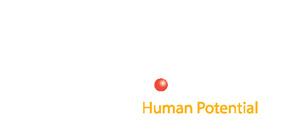
Workforce Management, Time & Attendance, Excellence presented by HR.com December 2022 41 Submit Your Articles ePublication editorialCalendar2022 CheckoutthenewandupcomingthemedHR topicsinWorkforceManagement,Time&At-tendance,Excellence. Check ePublications Editorial Calendar Here. Would you like to submit an article? | Write to us at ePubEditors@hr.com Submission Guidelines 1 Attendance Tracking: Spreadsheet vs. Software Aug 2022 2 Workforce Management Technologies Sep 2022 3 Labor Laws 2022-23 Oct 2022 4 Employee Scheduling Challenges and Trends 2023 Nov 2022 5 Employee Leave Policies 2023 Dec 2022
Thank you for partnering with us!
Ceridian’s flagship platform Dayforce helps you manage the entire employee lifecycle, from recruiting and onboarding, to paying people and developing their careers.
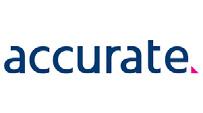

The only employee rewards and recognition platform that integrates with Amazon to provide rewarding, simple, flexible programs.

Sage is a cloud system that empowers organizations to effectively respond to changing priorities. Use powerful automation, comprehensive analytics, and flexible workflows to ensure your global workforce can adapt and thrive.

THANK YOU
By optimizing every facet of the client and candidate experience, we deliver the background checks you’ve always wanted.
Oracle provides organizations a complete solution connecting every human resource process from hire to retire— including global HR, talent management, workforce management, and payroll.

Workforce Management, Time & Attendance, Excellence presented by HR.com December 2022 42 Submit Your Articles
LEARN MORE
LEARN MORE
LEARN MORE
LEARN MORE
A DVERTISE WITH U S
LEARN MORE
Thank you for partnering with us!
UKG delivers best-in-class HR and workforce management in an unmatched suite of solutions and services, backed by people who care about yours. Our solutions create global workforce experiences that reflect the true connection between life and work.

 LEARN MORE
LEARN MORE
THANK YOU
Founded with a single vision and purpose - Harrison helps companies optimize human capital by leveraging a deep understanding of human resources and psychology.

Paychex, Inc. (Nasdaq: PAYX) is a leading provider of integrated human capital management software solutions for human resources, payroll, benefits, and insurance services.
 LEARN MORE
LEARN MORE
LEARN MORE
LEARN MORE
Workforce Management, Time & Attendance, Excellence presented by HR.com December 2022 43 Submit Your Articles A DVERTISE WITH U S
January 19, 2023
January 31, 2023
January 10, 2023
3:00 PM - 4:00 PM ET
January 11, 2023
January
January
The State of Human Experience in the Workplace
Performance
February 15-16, 2023 ReGIsTeR New Ideas and Tools for Effective
Management
ReGIsTeR
People Strategy for the #FutureOfWork
ReGIsTeR
Workplaces
The Art, the Science and the Practice of Hybrid
ReGIsTeR
Retention? Deliver
Career
Opportunities
19, 2023 11:00 AM - 11:35 AM ET
The Secret Sauce for Employee
the
Progression
Employees Want
ReGIsTeR
January 17, 2023 11:00 AM - 12:00 PM ET
Rising Minimum Wage Rates and How They May Impact Your Business
ReGIsTeR VIRTuAL eVenTs & hR.COM WeBCAsTs uPCOMInG
www.hr.com/virtualconferences
our
Schedule
Register Today! W e BCA s T s
24, 2023 11:00 AM - 12:00 PM ET
www.hr.com/upcoming_webcasts
View
Upcoming Webcasts
and
The Future of Payroll: New research reveals the journey ahead
2:00 PM - 3:00 PM ET ReGIsTeR
Shifting from Boss to Coach in a Hybrid Environment
ReGIsTeR W e BCA s T s VIRT u AL e V en T s
our
View
Upcoming Virtual Conference Schedule and Register Today!

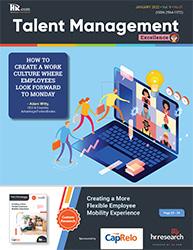
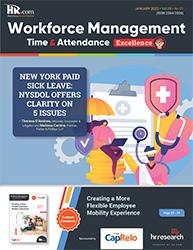




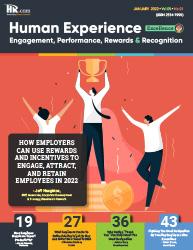





Like to submit an article? Use our online submission form or for more information go to www.hr.com/ExcellencePublications Publications 13 Targeted Publications to Reach Your Audience Informing, Educating, Enlightening and Assisting HR professionals in their personal and professional development, the Excellence series offers high-quality content through the publications!

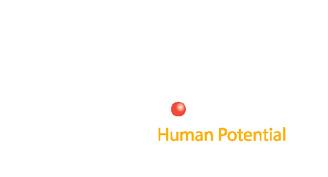
For more information: Phone: 1.877.472.6648 | Email: ePubeditors@hr.com | www.HR.com/epubs Workforce Management Time & Attendance Excellence December 2022

























 Linda Shaffer, Chief People Operations Officer, Checkr
Linda Shaffer, Chief People Operations Officer, Checkr































 LEARN MORE
LEARN MORE















